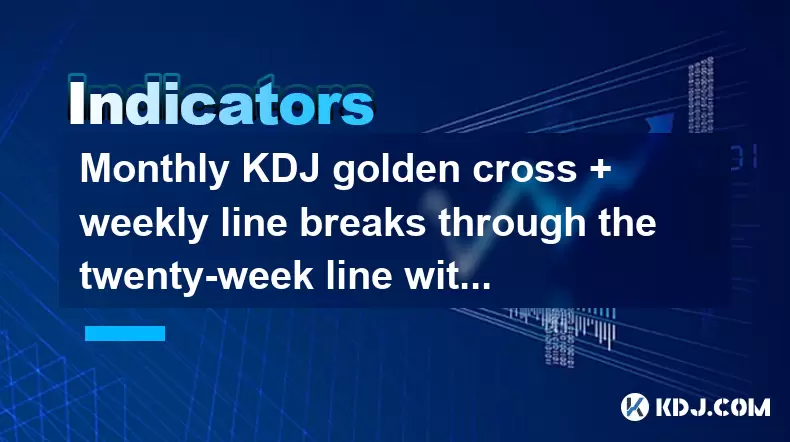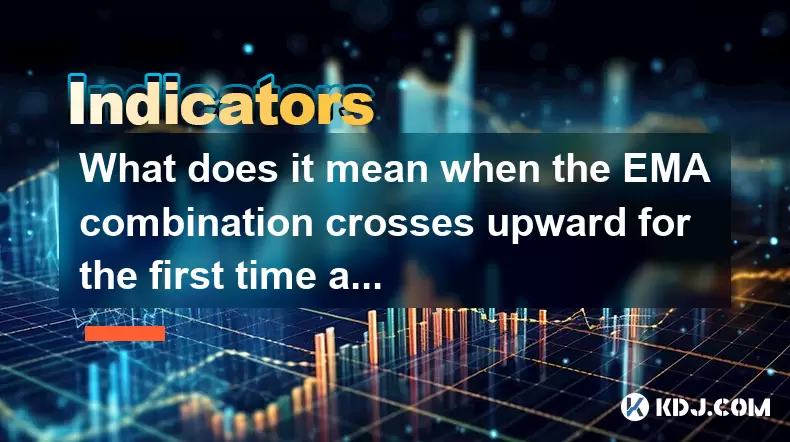-
 Bitcoin
Bitcoin $118600
0.36% -
 Ethereum
Ethereum $3855
1.06% -
 XRP
XRP $3.195
-0.09% -
 Tether USDt
Tether USDt $1.000
-0.04% -
 BNB
BNB $844.5
6.23% -
 Solana
Solana $191.3
2.83% -
 USDC
USDC $0.9997
-0.01% -
 Dogecoin
Dogecoin $0.2376
0.10% -
 TRON
TRON $0.3242
0.83% -
 Cardano
Cardano $0.8222
0.13% -
 Hyperliquid
Hyperliquid $45.26
6.53% -
 Sui
Sui $4.200
-2.56% -
 Stellar
Stellar $0.4336
-1.24% -
 Chainlink
Chainlink $18.86
0.28% -
 Hedera
Hedera $0.2796
-1.75% -
 Bitcoin Cash
Bitcoin Cash $583.3
-1.84% -
 Avalanche
Avalanche $27.06
8.09% -
 Litecoin
Litecoin $112.3
-1.16% -
 Toncoin
Toncoin $3.353
0.58% -
 UNUS SED LEO
UNUS SED LEO $8.968
-0.11% -
 Shiba Inu
Shiba Inu $0.00001395
-0.54% -
 Ethena USDe
Ethena USDe $1.001
-0.03% -
 Uniswap
Uniswap $10.76
0.69% -
 Polkadot
Polkadot $4.175
0.26% -
 Monero
Monero $326.7
1.07% -
 Bitget Token
Bitget Token $4.665
1.61% -
 Dai
Dai $0.9998
-0.02% -
 Pepe
Pepe $0.00001271
0.32% -
 Cronos
Cronos $0.1416
2.01% -
 Aave
Aave $299.3
1.15%
Monthly KDJ golden cross + weekly line breaks through the twenty-week line with large volume
A monthly KDJ golden cross combined with a high-volume break above the 20-week MA signals a powerful bullish reversal, indicating strong long-term momentum and institutional participation in crypto markets.
Jul 28, 2025 at 09:21 am

Understanding the Monthly KDJ Golden Cross in Cryptocurrency Trading
The KDJ indicator, a momentum oscillator derived from the Stochastic Oscillator, is widely used in cryptocurrency technical analysis to identify potential reversal points. It consists of three lines: %K (fast line), %D (slow line), and %J (divergence line). A golden cross in the KDJ context occurs when the %K line crosses above the %D line within an oversold region—typically below 20—on the monthly chart. This pattern is considered a strong bullish signal, especially when it aligns with other confirming factors.
In the monthly timeframe, signals are less frequent but carry higher reliability due to the extended time horizon. A monthly KDJ golden cross suggests a potential long-term bullish reversal, indicating that buying pressure is starting to dominate after a prolonged downtrend. Traders monitor this crossover closely because it often precedes major upward movements in price, particularly in volatile markets like cryptocurrencies.
To identify this signal:
- Ensure the KDJ parameters are set to the standard (9,3,3) unless otherwise optimized.
- Confirm that both %K and %D are rising from below the 20 level.
- Verify that the %J line is also turning upward, reinforcing momentum.
- Cross-reference with price action to avoid false signals during sideways markets.
Interpreting the Weekly 20-Week Moving Average Break with High Volume
A break above the 20-week moving average (MA) on the weekly chart is a significant technical event in crypto trading. The 20-week MA, calculated as the average closing price over the last 20 weeks (approximately 140 days), acts as a dynamic support or resistance level. When price closes above this MA with large trading volume, it signals strong institutional or whale participation and a potential shift in market sentiment.
Volume plays a crucial role in validating the breakout:
- High volume confirms the strength of the move and reduces the likelihood of a false breakout.
- Compare the breakout volume to the 30-day average volume; a surge of 1.5x or more is considered significant.
- Look for consecutive green candles post-breakout to confirm sustained momentum.
This combination—price breaking above the 20-week MA with high volume—often marks the beginning of a new uptrend. In Bitcoin and major altcoins, such patterns have historically preceded substantial rallies, especially when occurring after extended consolidation or bear markets.
Combining Monthly KDJ Golden Cross and Weekly MA Break: Signal Synergy
When both the monthly KDJ golden cross and the weekly 20-week MA breakout with high volume occur simultaneously, the confluence creates a powerful bullish setup. Each signal on its own is meaningful, but their alignment increases the probability of a sustained upward move.
Key aspects of this synergy:
- The monthly KDJ golden cross provides a long-term momentum shift signal.
- The weekly MA breakout with volume confirms short-to-mid-term trend reversal.
- Together, they reflect alignment across multiple timeframes, reducing noise and false signals.
Traders should:
- Check if the volume spike coincides with the weekly close above the 20-week MA.
- Ensure the KDJ crossover is not occurring in overbought territory (above 80), which would weaken its validity.
- Monitor for any divergence between price and KDJ, which could indicate weakening momentum despite the crossover.
This dual confirmation is particularly effective in assets like Bitcoin (BTC) and Ethereum (ETH), where institutional activity influences long-term trends.
Step-by-Step Verification Process for Traders
To validate this combined signal, follow these steps:
- Open a cryptocurrency charting platform such as TradingView or Binance Trading Terminal.
- Set the primary chart to weekly timeframe and overlay the 20-week simple moving average (SMA).
- Confirm that the most recent weekly candle has closed above the 20-week SMA.
- Check the volume bar of that candle—ensure it is significantly higher than the previous 5–10 weeks’ average.
- Switch to the monthly timeframe and apply the KDJ indicator with default settings (9,3,3).
- Observe if the %K line has crossed above the %D line in the current or previous month.
- Ensure both KDJ lines were previously below 20 to confirm an oversold reversal.
- Cross-verify with on-chain data (e.g., exchange netflow, MVRV ratio) to assess broader market health.
This checklist ensures that the signal is not based on isolated data but on a holistic technical confirmation.
Risk Management and Entry Strategies
Even with strong signals, risk management remains essential. A high-probability setup does not guarantee success, especially in crypto’s volatile environment.
Recommended strategies:
- Wait for a retest of the 20-week MA after the breakout. If price pulls back and finds support near the MA with diminishing volume, it strengthens the entry case.
- Use position sizing—allocate no more than 5% of total capital per trade.
- Set a stop-loss below the recent swing low or under the 20-week MA, depending on volatility.
- Consider scaling in—enter 50% at breakout, 30% on retest, and 20% on further confirmation (e.g., new higher high).
- Monitor funding rates and open interest on futures markets to detect potential over-leverage.
Avoid entering immediately on the news of the signal. Wait for price confirmation over the next 1–2 weeks to avoid whipsaws.
Common Misinterpretations and Pitfalls
Many traders misread these signals due to incomplete analysis. A KDJ crossover alone is not sufficient if it occurs during a sideways market. Similarly, a volume spike without sustained follow-through may indicate a bull trap.
Watch for:
- False volume signals—wash trading on low-liquidity altcoins can inflate volume misleadingly.
- Lagging indicators—KDJ is reactive, not predictive; always combine with price action.
- Timeframe mismatch—a monthly signal should not be traded with a scalping mindset.
- Ignoring macro conditions—regulatory news or macroeconomic shifts can override technical patterns.
Ensure the asset has sufficient liquidity and trading history for the signals to be statistically meaningful.
Frequently Asked Questions
What if the KDJ golden cross happens but volume is low on the MA breakout?
Low volume during the MA breakout reduces the reliability of the trend reversal. It suggests lack of conviction among buyers. Wait for a follow-up weekly candle with stronger volume before considering entry.
Can this strategy be applied to altcoins with less than two years of history?
Limited historical data makes the 20-week MA and monthly KDJ less reliable. These indicators require sufficient data points. Use with caution and supplement with on-chain metrics or relative strength analysis.
How do I adjust KDJ settings for different cryptocurrencies?
The default (9,3,3) works for most cases. For highly volatile altcoins, consider smoothing with (14,3,3) to reduce noise. Always backtest changes on historical data before live use.
Is it necessary for both signals to occur in the same month?
They do not need to align exactly. A monthly KDJ golden cross in one month and a weekly MA breakout the next can still form a valid confluence, especially if price action remains supportive.
Disclaimer:info@kdj.com
The information provided is not trading advice. kdj.com does not assume any responsibility for any investments made based on the information provided in this article. Cryptocurrencies are highly volatile and it is highly recommended that you invest with caution after thorough research!
If you believe that the content used on this website infringes your copyright, please contact us immediately (info@kdj.com) and we will delete it promptly.
- Elon Musk, SpaceX, and Bitcoin: A $153 Million Mystery
- 2025-07-28 22:30:12
- Ozak AI: Is This Crypto Gem Primed for a 2025 Takeoff?
- 2025-07-28 22:30:12
- Anchorage Digital & Ethena Labs: Ushering in a New Era of Stablecoins with GENIUS Compliance
- 2025-07-28 20:50:13
- Altcoins Soar, Bitcoin Stumbles: Decoding the Crypto Inflows Shift
- 2025-07-28 20:50:13
- XRP, Pi Coin, Ethereum: Decoding the Latest Crypto Trends
- 2025-07-28 21:30:12
- Meme Coin Mania: SPX6900's Surge and TOKEN6900's Potential Explosion
- 2025-07-28 21:30:12
Related knowledge

What does it mean when the EMA combination crosses upward for the first time after sideways trading?
Jul 28,2025 at 03:43pm
Understanding the EMA and Its Role in Technical AnalysisThe Exponential Moving Average (EMA) is a widely used technical indicator in cryptocurrency tr...

What signal does the ROC send when it rises rapidly from a low level and breaks through the zero axis?
Jul 27,2025 at 10:15am
Understanding the Rate of Change (ROC) IndicatorThe Rate of Change (ROC) is a momentum-based oscillator used in technical analysis to measure the perc...

What does it mean when the price breaks through the double bottom neckline and the moving averages are arranged in a bullish pattern?
Jul 28,2025 at 10:57am
Understanding the Double Bottom PatternThe double bottom is a widely recognized reversal chart pattern in technical analysis, particularly within the ...

What signal does the DMA fast line cross the slow line above the zero axis?
Jul 28,2025 at 05:42am
Understanding the DMA Indicator and Its ComponentsThe DMA (Difference of Moving Averages) indicator is a technical analysis tool used in cryptocurrenc...

What does it mean that the rebound is blocked after the moving average is arranged in a short position for the first time?
Jul 26,2025 at 10:51am
Understanding the Short-Term Moving Average ConfigurationWhen traders refer to a 'short position arrangement' in moving averages, they are describing ...

What does it mean that the ZIGZAG low point is raised and the high point breaks through the previous peak?
Jul 28,2025 at 03:28am
Understanding the ZIGZAG Indicator in Cryptocurrency TradingThe ZIGZAG indicator is a technical analysis tool widely used in cryptocurrency trading to...

What does it mean when the EMA combination crosses upward for the first time after sideways trading?
Jul 28,2025 at 03:43pm
Understanding the EMA and Its Role in Technical AnalysisThe Exponential Moving Average (EMA) is a widely used technical indicator in cryptocurrency tr...

What signal does the ROC send when it rises rapidly from a low level and breaks through the zero axis?
Jul 27,2025 at 10:15am
Understanding the Rate of Change (ROC) IndicatorThe Rate of Change (ROC) is a momentum-based oscillator used in technical analysis to measure the perc...

What does it mean when the price breaks through the double bottom neckline and the moving averages are arranged in a bullish pattern?
Jul 28,2025 at 10:57am
Understanding the Double Bottom PatternThe double bottom is a widely recognized reversal chart pattern in technical analysis, particularly within the ...

What signal does the DMA fast line cross the slow line above the zero axis?
Jul 28,2025 at 05:42am
Understanding the DMA Indicator and Its ComponentsThe DMA (Difference of Moving Averages) indicator is a technical analysis tool used in cryptocurrenc...

What does it mean that the rebound is blocked after the moving average is arranged in a short position for the first time?
Jul 26,2025 at 10:51am
Understanding the Short-Term Moving Average ConfigurationWhen traders refer to a 'short position arrangement' in moving averages, they are describing ...

What does it mean that the ZIGZAG low point is raised and the high point breaks through the previous peak?
Jul 28,2025 at 03:28am
Understanding the ZIGZAG Indicator in Cryptocurrency TradingThe ZIGZAG indicator is a technical analysis tool widely used in cryptocurrency trading to...
See all articles

























































































